Latest Summons Lab Research
From the origin’s of complex life to the timing of oxygen’s first appearance in the atmosphere, the Summons lab has published a number of exciting and important papers in recent weeks.
David recently published his combined biomarker and genomic study in PNAS. Here, he presented conclusive evidence that sea sponges were indeed the source of the unusual biomarkers in 640 million year old rocks. This ‘sponge biomarker hypothesis’ was first proposed by Roger and co-workers, and this new work provides further evidence that sea sponges were one of the earliest animals on the scene on Earth. Read more about this in a number of media outlets such as The Independent, Newser, Boston CBS, TechTimes and MIT News.
In May in Scientific Advances, Genming published evidence for a rapid oxygenation of Earth’s atmosphere 2.33 billion years ago and a precise constraint on the timing of the Great Oxidation Event (known as the GOE). Media coverage for this include the Air & Space Magazine published by the Smithsonian, Phys.org, and MIT News.
Xiaolei recently published two papers providing significant advances in our knowledge of the diagenetic fate and structural diversity of glycerol dialkyl glycerol tetraether lipids. He published his work in the journals Geochimica et Cosmochimica Acta and Rapid Communications in Mass Spectrometry. Xiaolei’s work involved collaborations with members of the Bosak Lab in MIT and the Hinrich’s Lab in Bremen.
In June, Shane published a paper in Geobiology studying ooids from The Bahamas. Ooids are accretionary carbonate grains that occur in many Precambrian and Phanerozoic rocks, and provide an insight into the environmental/depositional conditions and seawater chemistry in marine environments through time. However, the formation of these enigmatic grains is actively debated. In this paper, Shane demonstrates that the major source of organic matter within ooids is from benthic microbial biofilms. Organic matter bound within ooid grains is old and altered, having been subject to microbial decomposition, likely under reducing conditions. The association of bacteria and these molecular signals with ooid carbonate crystals suggests that these biological processes may contribute to ooid formation.


